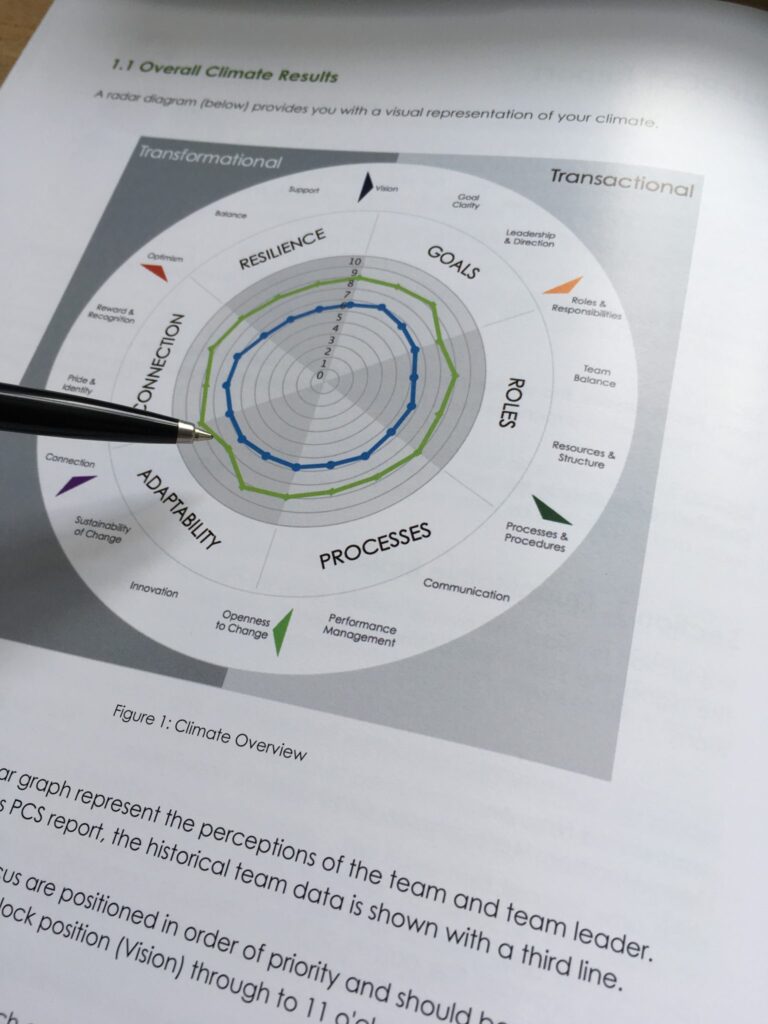Measuring and tracking progress is commonplace within businesses large and small. Growing businesses need close and careful management, and measurement systems are an important way of monitoring progress by giving information about what’s happening now and providing a framework for how you can improve.
There are countless Key Performance Indicators (KPIs) that can be measured, usually based around the key business drivers: sales performance, complaints received, financial performance against target, benchmarking against similar companies etc etc. But there is now – rightly – a developing theme of measurement in the Human Capital area of business, and it is starting to be seen as important as Financial and Manufactured Capital. It is thought that around 80% of an organisation’s value lies in its less tangible assets (Human, Intellectual and Social capital), and so a focus in this area can have a profound effect on business performance.

To date, measurement in this area has been in the form of: Total cost of workforce; Staff ‘churn’; Investment in Training and Development; Retention of ‘Talent’; and Employee Engagement. However, the growing acceptance that people are the key to driving business performance suggests that measures in this area will play a greater role in how business track and monitor business progress.
An organisation’s people are key to driving business performance.
The pressure on leaders today is greater than it ever has been. There are complex external factors effecting contemporary business: economic uncertainty, technological advancements, changing employee expectations, to name but a few. And in an era of financial fragility there has never been a more important time to correctly analyse and evaluate every aspect of the organisation – including a dedicated approach to measurement of leaders and team performance.
Staff satisfaction and employee engagement surveys – which are commonly used to check employee sentiment, feeling and commitment; only get responses to the questions that are asked and often underutilise (or incorrectly utilise) the data.
Segmenting the data to enable it to be used in effective decision making is also a common issue. The focus often becomes how to improve the survey and the numbers completing it, rather than addressing the main issues contained within the responses. A survey soon loses traction with people when little or no changes or enhancements are seen!
Competent organisations accept the impact that its people have on business performance. To build this competency, it’s important to appreciate of the value of better understanding the strengths and weaknesses of that workforce; and where you can improve to have the best effect on your business performance. Investing more strategically in your people will improve training value, direct development to the right areas, advance leader capability and improve opportunities and wellbeing of staff.
“Anything that gives a leader better clarity and insight into what’s really going on within their teams and across their organisations is a good thing”
Benefits of Human Capital Measurement:
- Focus training and development spend to the right areas – Where to best invest in people and processes to gain maximum value and improve performance – better RoI. The answer is not simply not to do it; it’s to do it in the areas that will improve capability and drive performance.
- Improve leader and management capability – There is a clear and positive relationship between the way in which we manage and lead people and their capacity to drive business success. Well-managed organisations perform more strongly than those poorly managed. Effective measurement can help identify good and poor management behaviours and allow development accordingly. Investing in strengthening manager performance can have as much impact as increasing workforce numbers or investing in technology.
- Improve employee health and wellbeing – By assessing peoples motivation, happiness, engagement and wellbeing you can start to address the real issues effecting workplace climate and their ability to operate effectively.
- Improve the quality of decision-making – Applying a more joined-up and data-focussed approach to decision-making – even in the Human Capital space – allows insight to be gained into what’s working and what’s not. It takes away the subjectivity aspect, which is seen far more with people and how they are behaving, and adds an element of effective analysis to support decisions.
- Benchmark and compare functions and teams – Tracking performance over time is essential, both when using more common business KPIs and now with people. How people and teams are performing now, compared to last quarter, or last year, has real value. Measurement in the right area also allows organisations to compare different parts of the business, be that functional areas, locations or teams, to understand the areas of greatest need and direct performance improvement most efficiently.


